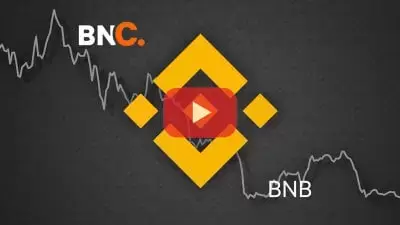 |
|
 |
|
 |
|
 |
|
 |
|
 |
|
 |
|
 |
|
 |
|
 |
|
 |
|
 |
|
 |
|
 |
|
 |
|
Cryptocurrency News Articles
Circle may have missed out by rejecting Ripple's offer, crypto experts say
May 03, 2025 at 04:02 am
(The Center Square) – The crypto company Ripple recently offered big money to purchase the company best known for issuing the USDC stablecoin.

A crypto expert says that a merger between Ripple and Circle would have diversified the two companies’ revenue streams.
After nearly two years of rumors, Ripple’s interest in acquiring Circle was ultimately rejected and seen as too low.
The crypto behemoths had discussed a merger for several months, converging after a tumultuous period for the crypto industry.
Best known for its XRP token, Ripple had offered around $4 billion to $5 billion for Circle Internet Group Inc., a company best recognized for issuing the USDC stablecoin.
But the proposal was ultimately rejected by Circle executives, who set the price at closer to $6 billion, and the talks broke down, multiple sources told Bloomberg.
The offers and valuations could not be immediately confirmed by either company.
However, two people familiar with the matter said that the price difference ultimately proved insurmountable, despite months of negotiations.
The merger would have consolidated two prominent stablecoin companies and brought together two of the leading crypto firms in the United States.
Both companies are exploring routes to go public, with Circle having to cancel a merger with a blank-check firm last year due to difficulties in securing a suitable valuation.
Meanwhile, Ripple has been considering an Initial Public Offering (IPO) in the second half of this year.
A merger would have sped up the process for both firms.
The fact that the talks broke down despite months of discussions and close proximity in valuation surprised some crypto experts.
Some argued that Circle may regret its decision.
“Considering the current state of the crypto market, it seems like a no-brainer for Circle to accept Ripple’s offer,” said crypto analyst Ali Aoun.
“With a valuation of $4 billion to $5 billion, it’s a steal for a company of Circle’s stature. It’s no wonder the offer was rejected out of hand.”
Aoun added that Ripple has been aggressively launching its own stablecoin (RLUSD) and wants to become a serious competitor to Circle’s USDC and Tether’s USDT, potentially hurting both their market shares; these stablecoins are cryptocurrencies with values pegged to the United States dollar.
“Had Ripple acquired Circle, it would have owned the world’s second-largest stablecoin,” he said.
Moreover, a merger between Ripple and Circle would have diversified the two companies’ revenue streams.
“The combination of Ripple’s global payments network and liquidity with USDC’s vast user base and recognized brand would have created a formidable force in the future of finance,” said former Amazon and IBM executive Sandy Carter.
Carter noted that Ripple could have introduced USDC stablecoin to foreign markets, vastly expanding its reach.
“Its network reaches far beyond U.S. borders, with strong relationships across Asia, Latin America, and Europe,” she said. “Ripple says that 90% of the company’s business is conducted outside the United States. That kind of reach could’ve propelled USDC into markets where stablecoin adoption is still in its infancy but growing fast.”
She added that the rejection indicates Circle has confidence in its product and thinks it can build the digital infrastructure necessary to increase its global market share.
“For leaders in fintech, digital assets, and global payments, the lesson is clear: market share alone doesn’t win the future,” she said. “It’s about ecosystem reach, interoperability, and trust. Circle is betting that those three pillars will serve it better independently. Ripple is betting it can build or acquire its way to the same destination, faster.”
Tech policy expert Roslyn Layton said the two sides could have made a good team, especially as Circle has struggled to have an Initial Public Offering.
“Acceleration happens in bear markets, and innovation turns to conquest in the rebound,” she said. “The window is closing. @Circle is hitting IPO headwinds and @Ripple has cash, infrastructure and legal clarity.”
This year, Circle is amid its second attempt to go public. It tried to in 2022 but had a $9 billion merger deal collapse that would have allowed it to happen.
Amid ongoing stock market volatility, other cryptocurrency companies are delaying their plans to go public, The Wall Street Journal reports.
Disclaimer:info@kdj.com
The information provided is not trading advice. kdj.com does not assume any responsibility for any investments made based on the information provided in this article. Cryptocurrencies are highly volatile and it is highly recommended that you invest with caution after thorough research!
If you believe that the content used on this website infringes your copyright, please contact us immediately (info@kdj.com) and we will delete it promptly.




























































